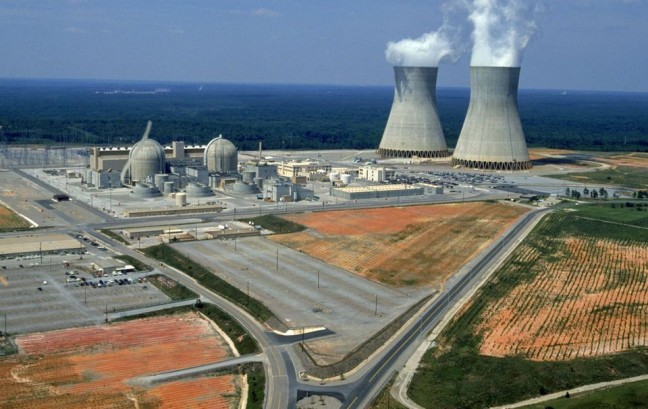 |
| Reactors 1&2 at Plant Vogtle in Burke County, Georgia |
Last week, the Department of Energy (DOE) announced it would issue $1.8 billion in loan guarantees to the Municipal Electric Authority of Georgia (MEAG) for the construction of two nuclear reactors at Plant Vogtle near Waynesboro, Georgia. The move comes more than five years after the guarantees were first conditionally offered in February, 2010, and brings the total amount of DOE loan guarantees for the project to $8.3 billion. It also marks a stunning willingness to bet billions more on a project that after experiencing countless setbacks has become deeply troubled.
When the construction of units 3&4 at Plant Vogtle was announced in 2008, the three major Vogtle co-owners – Southern Company subsidiary Georgia Power, Oglethorpe Power, and MEAG – estimated that the project would cost roughly $14.3 billion, including both capital and financing costs. Due to a number of delays for reasons ranging from mis-poured concrete to faulty part manufacturing, construction is now at least three years behind schedule and almost $3 billion over budget.
The project’s problems, however, didn’t stop DOE from issuing $6.5 billion in loan guarantees to Georgia Power and Oglethorpe in February, 2014. It was later revealed that, as TCS had suspected, the four years of closed-door negotiations had allowed the two owners to craft a deal in their favor: DOE charged the two nothing to cover the credit subsidy cost of the guarantees. Waiving the fee implied that the project’s risks were so small as to be negligible.
It became painfully obvious how baseless that assumption was when the co-owners announced the project had fallen even further behind schedule and bust its budget by at least another $1 billion, less than a year later.
We hoped that DOE would have learned from the lesson and withdrawn its offer to provide the remaining $1.8 billion in loan guarantees to MEAG, the most vulnerable project partner. Instead, the department decided to shirk its responsibility to protect taxpayers and recklessly throw good money after bad. That choice provides yet another example of why DOE’s loan guarantee program needs to be dramatically reformed before another taxpayer-backed guarantee goes out the door, or eliminated altogether.










